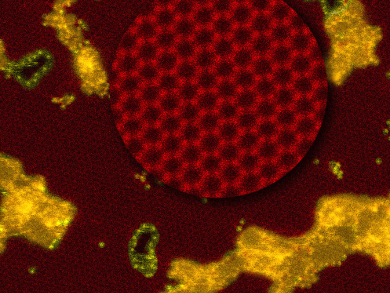Desalination of seawater allows fresh water supply to keep up with the ever rising demand of a growing population. However, established desalination processes such as distillation and reverse osmosis require large amounts of energy. State-of-the-art reverse osmosis membranes (usually polymers) require high pressures to push water through them.
Shannon M. Mahurin, Ivan V. Vlassiouk, and co-workers, Oak Ridge National Laboratory, TN, USA, have created a porous graphene membrane that can separate salt from water efficiently. Graphene is synthesized by chemical vapor deposition and supported on silicon nitride. Pores are generated by etching the membrane with an oxygen plasma. This allows the researchers to tune their number and size by varying the etching time.
The resulting thin and porous graphene membrane allows water flux that is an order of magnitude higher than for state-of-the-art polymer membranes and filters out nearly all sodium and chloride ions.
- Water desalination using nanoporous single-layer graphene,
Sumedh P. Surwade, Sergei N. Smirnov, Ivan V. Vlassiouk, Raymond R. Unocic, Gabriel M. Veith, Sheng Dai, Shannon M. Mahurin,
Nat. Nanotechnol. 2015.
DOI: 10.1038/nnano.2015.37




